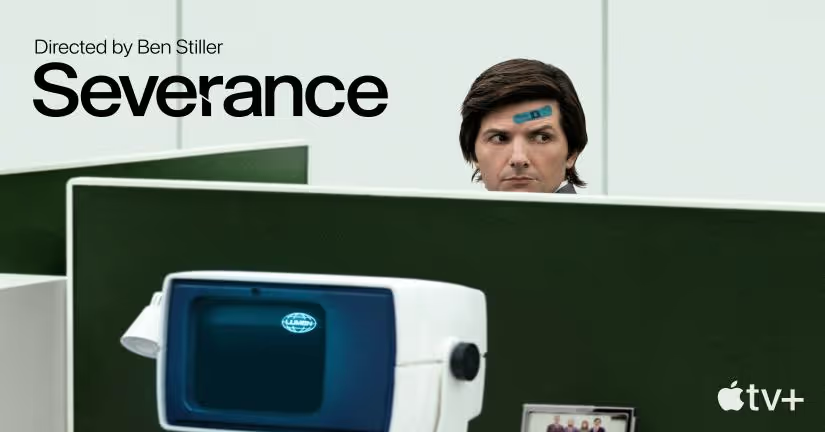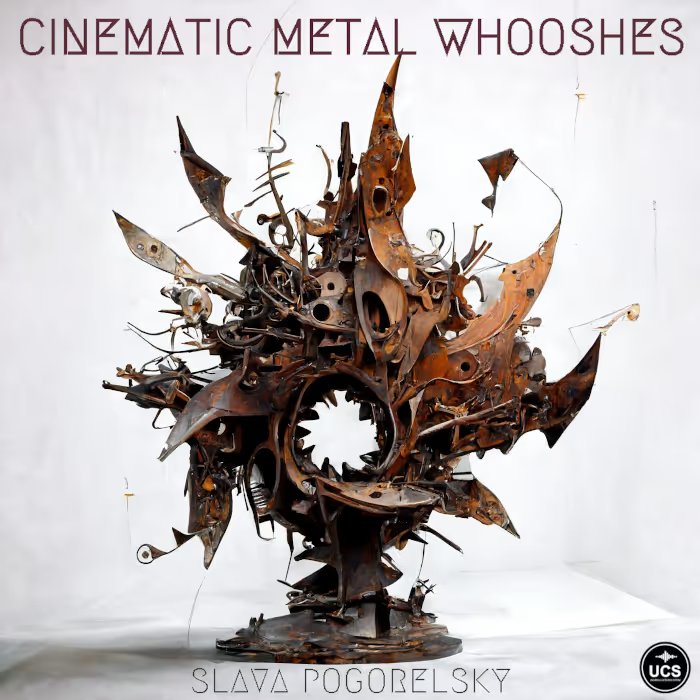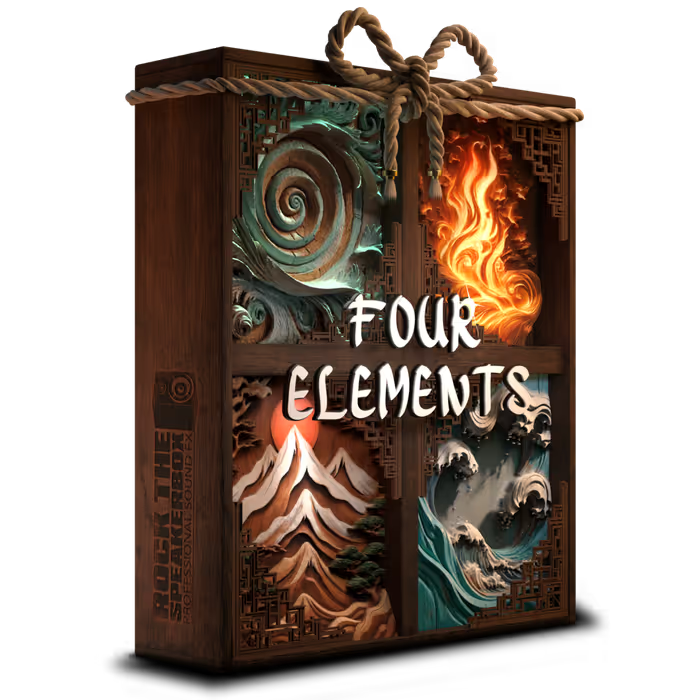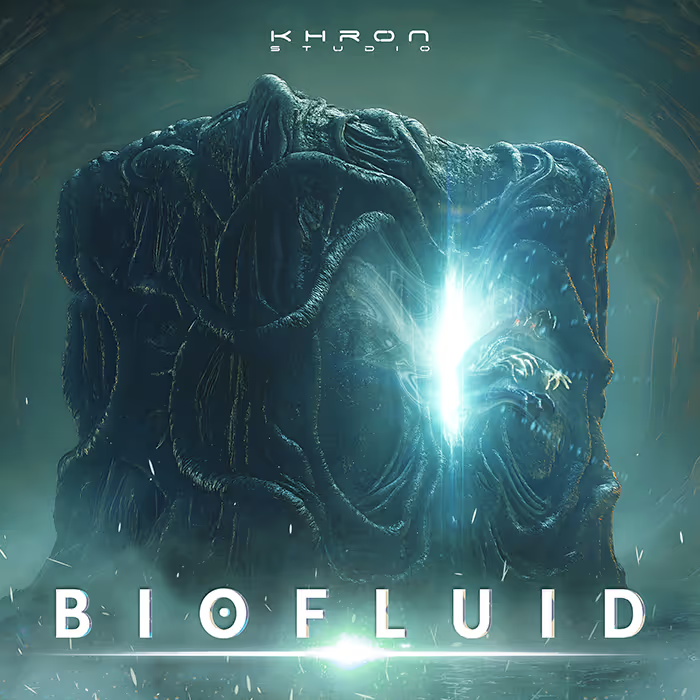Some are better than others at compartmentalizing their lives, at keeping work and home separate. But there are those days when issues in area one spill over into the other. Wouldn’t it be great to permanently divide the two?
Apple TV+ series Severance explores this idea in a way that goes from low-key creepy to wtf pretty quickly. But it does it in an understated way that’s more psychologically uncomfortable than visually horrific. A key element to creating the WEIRD vibes is the use of subtle sound to support the growing sense of dread that all is not right with the process of “severance” (i.e., having one’s work life and home life actually divided mentally through the use of an embedded microchip).
Here, supervising sound editor/sound designer Jacob Ribicoff talks about creating shifting background sounds made from processed breaths to build up tension in the corridors of Lumon, creating the sonic indicator for the activation of the severance microchip in the elevator, and more. Plus, the foley team of foley editor Eric Strausser, foley artist Marko Costanzo, and foley mixer George A. Lara talk about recording the sound of muted footsteps for inside Lumon, which add an entombed feeling to the space, working with perspective, and how they created goopy paint sounds, baby goat feet, and much more!
Severance — Official Trailer | Apple TV+
Can you talk about the sound of the low-tech equipment inside Lumon – early computer-era tech? Was this covered with both effects and foley?

Jacob Ribicoff (JR): We definitely covered the environments in terms of effects and foley, but as for the computers and the keyboards, that was foley.
Marko Costanzo (MC): That was cool because we got the keyboards delivered to us. George [Lara] and I decided to record a whole bunch of different perspectives and that became the backgrounds.
JR: That became our go-to for the keyboards.
Eric Strausser (ES): It’s always great to get the actual prop from set. They were a bit apprehensive to give it to us because they built them – they manufactured them themselves and they only had four with maybe one backup. But, they also wanted us to have the actual prop because Ben Stiller (exec. producer) was into that. So they sent the keyboards over in giant pelican cases.
MC: The keyboards were made out of wood and plastic. They sounded odd, but from what we heard, we couldn’t recreate what they were supposed to sound like so having them was really helpful.
ES: I think they’re functional – actual working keyboards.
JR: Whether it’s the keyboards or the footsteps in Lumon, that foley was really important to Ben. Before we started on the prep work for the episodes (just in our preliminary talking) and even during the mix process, anytime the show is quiet in MDR, Ben would say that he just wants to hear keyboard typing in the background. He didn’t want to hear a lot of beeping, electronic, or mechanical sounds coming from the computers. He just wanted to hear the keyboards.
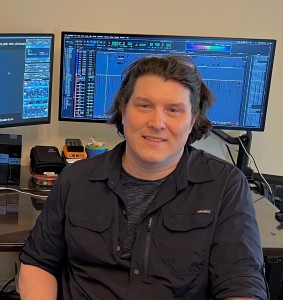
Also, the footsteps in the corridors were something that was on Ben’s radar early on because he had to endure the production version of those footsteps. They sounded very reverberant because of the hollow floor on set. He wanted the opposite sound in the final track – footsteps that were dry and precise.
MC: He wanted the footsteps to sound dead.
ES: When Marko and George recorded the footsteps for the severed floor of Lumon, they set up barriers around the surface so there wouldn’t be any resonance to the footsteps.
MC: Yeah, and we used an active block – something that mutes the darkest sounds in our work. It was fun to do but odd in some spots. The feet were nothing like we normally do.
George A. Lara (GL): Whenever we had to record the footsteps on carpet, it was unusual because they had to be quiet and intimate. So, we placed the microphone closer than usual, so we could get a good level.
The cubicles had these dividers and we needed to record a sound for that. It was funny because
Irving would move them up and down all the time, and that became an important element.
As for the typing, the tension started to build up the more they used the keyboards. As it
became more intriguing in the scene, we had the sound become bigger and bulkier. Eric did a
terrific job of editing that into place.
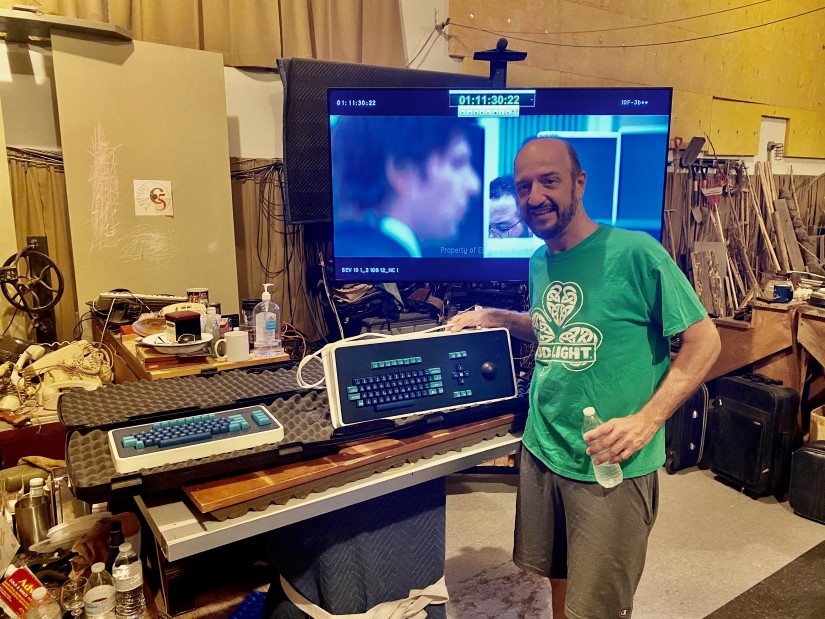
Later in the season, when they break into the security office, that’s where all the beeps and telemetry sounds come in. Can you talk about your approach to building out the security office sound?
JR: In terms of the telemetry sounds, those came from me and my library. Some of them came from the picture department, too. We got some nice AAF tracks to build on.
The security office was fun to create, to go into telemetry land and cut all these different sounds for the visuals of what was happening on those screens. It then becomes a carving process through the mix to decide when we wanted to hear those and when we didn’t want to, especially in the last two episodes. That all builds to a crescendo.
There’s a great scene with Milchick cutting through the belt that is holding the security doors closed.
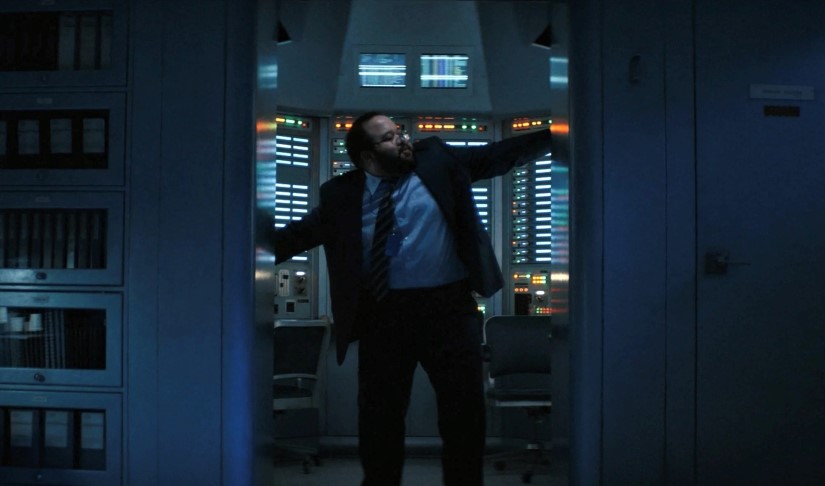
That was a great sound! You could hear the sawing and the tension of the leather. Marko and George, how did you handle that belt-cutting sound?
MC: We probably did two or three different varieties of things. For the tension sound, we probably put leather creaks in there.
I kept wondering what the belt was connected to on the other side so I could come up with a sound that made sense and was related to what was happening, and then creak it, or grind it.
It all boils down to just throwing a bunch of sounds at it.
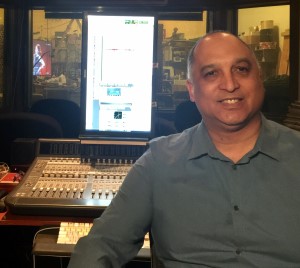
GL: Marko is right. We recorded a few elements that help intensify the visual of the belt being cut using a serrated knife, a leather creak to build the tension, and some cloth tears in the extreme closeups of the belt fibers ripping apart.
ES: That’s the funny thing, though. My job is to cue everything and say, “Ok, these are the areas we want to cover” and then George and Marko give me multiple options for all those cues. I’ll cut those in and sometimes add some extra sounds from my library and that gets handed off to Jacob and he has the monumental task of not only mixing down those tracks just for the foley moment, but he’s also trying to blend all of those sounds into what is going on in the effects, backgrounds, music, and dialogue.
It’s layers upon layers upon layers…
MC: …of things that are related.
JR: In this bucket brigade that Eric just described – where there’s a chain of events with Eric cueing it, then George and Marko recording it and giving all of these options back to Eric who cuts it, and then it comes to me – I’ll do a pass through it and if I feel like it needs some pitching up or down, I’ll do that. Or, I’ll do some kind of processing beyond just leveling sounds. Then we bring it to the mix.
Normally as the effects mixer, I’ll mix the foley. But on this show, we gave it to Bob Chefalas, who was the dialogue and music re-recording mixer. Since he was mixing the production tracks and putting a certain room ambience on the dialogue, we wanted that processing to be on the foley as well. That made a lot of sense.
There are scenes where the music is very loud and so the foley had to cut through the music in numerous instances.
In many cases, the foley in those scenes – in Ep. 8 and Ep. 9 – is loud. There are scenes where the music is very loud and so the foley had to cut through the music in numerous instances.
For instance, in Ep. 9 when Milchick is running through the corridor, I remember telling Eric to tell George and Marko that – through their approach and tricks in creating the foley – they’ll need to give us something that is really going to cut through the music. And it does. It works so well. One of my favorite things about that episode is that shot of Milchick running through the hall.
One thing that was great, which you don’t always get, is that Ben Stiller was so into the foley and wanted to hear more of those feet. How often does a director say that? So, we lucked out on that.
MC: I have to hand it to George on that because he scrutinizes the music and he makes me do things two or three times. But we’re fighting those effects all the time. Jacob got the levels he needed because George is on top of that every time. It’s a battle with music.

That leads me to that great scene in Ep. 8 where Irving cranks up the punk rock as he’s painting. There were all these great paint sounds and the music there was very dominant…
MC: That is the perfect example of George listening to what’s in the track. I’m going to do the same work, or make the performance stronger, but it’s George’s instructions while we’re working that make that pipe through.
JR: God bless George, Marko, and Eric for providing all these options. I’m sitting there with five options for that scene of Irving painting, and they run the gamut from splatting and wet to scraping and dry.
So, for me, I’m thinking about the music being loud and dense and I know that a lot of these options won’t cut through, so whatever cuts through is what I’m going to go with.
It was great because there were sounds of the paint that cut through and you get that gooey sound. For that to work and for you to feel that paint texture through this heavy rock track, you can’t ask for more than that.
…find what sounds you can push to bring the painting to life for a split second, so the audience can feel the wetness of that paint.
ES: Plus, you’re trying to sneak it in. The music is loud, but it does bump up and down, and when the music drops, that’s a moment to find what sounds you can push to bring the painting to life for a split second, so the audience can feel the wetness of that paint. Then, boom, the music comes back in and it dominates.
MC: To create the painting sound, we do it in layers.
We get a series of stiff brushes and get that brush sound.
Then for the gooey element, I like using hand sanitizer. One, because it’s so plentiful right now. And two, it sticks to your hands unlike water so I can get multiple takes of gooey noise.
I go for volume whenever possible.
ES: That’s interesting. I’m still learning that stuff about their process. I’m always sending them cues and we’ll have discussions, like, I’ll ask for a specific surface but they’ll look at it and suggest another surface. It becomes this debate and they’ll give me options. But, I never thought about it from the standpoint of Marko choosing substances based on their longevity. Like, he’ll pick a substance for its sound but also for its performance because he’s performing it over and over and over.
MC: Right, and against what noise. What are the other noises on the track? What’s going to cut through that and not blend in to the point that you can’t hear it?
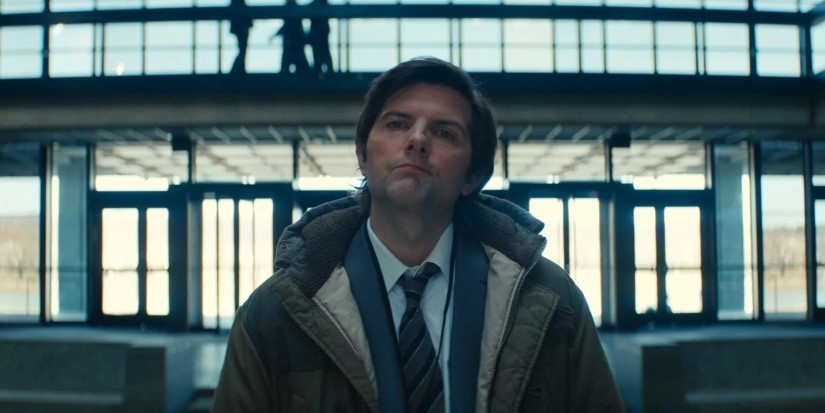
There’s a great moment for foley right off the bat in Ep. 1. Mark arrives at Lumon and takes off his personal items so his Innie won’t know who his Outie is. Can you talk about recording that scene?
GL: It was an intricate scene to record and we had to get it right because we went back to it in different episodes.
The one thing to consider about that scene is the perspective.
MC: The one thing to consider about that scene is the perspective. What side is he taking it off of? Where’s the tray that he’s putting it in? We might have been shooting the foley from the opposite side so that you hear it a bit muted versus directly up front and close. We look at what’s there, try to go for realism, and then based on the critiques, we mold it in that direction.
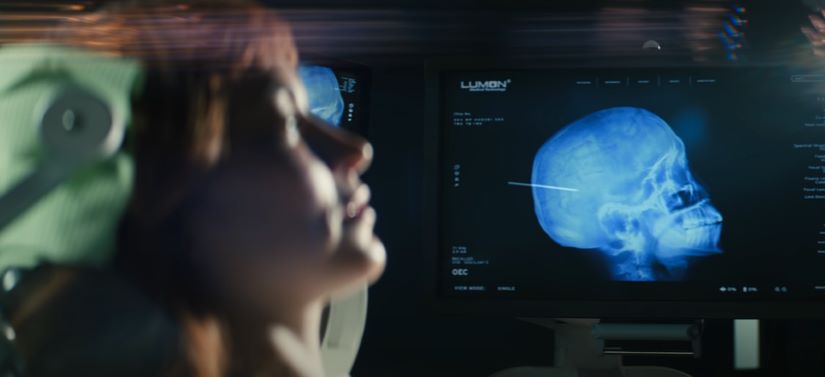
Realism, alright! So for Helly’s transplant surgery, we’re talking skulls and drills…
MC: Believe me, I grimace every time I see things going into people’s heads because I feel every bit of it. I have to think about what sound to make to satisfy the desires of the editors, re-recording mixers, and directors.
…you need a really strong sound so that when you play it very low it still has the essence of whatever it is.
JR: You guys did a great job with that stuff. And the directive during the mix – as we’re mixing in the foley and effects – was to play it as low as possible. But that’s where you need a really strong sound so that when you play it very low it still has the essence of whatever it is. So, if it’s some gooey brain matter played at a super low level, you want to have that cringe feeling.
My favorite sound of all those sounds in this scene is when you see in the x-ray that they’re putting the chip in, and there’s this tiny butterfly flap thing that suddenly opens. There’s a flick for that and on the mix level, I was trying to protect that sound at all costs because it was so cool.
MC: I remember that sound. We only see these things for a few moments and then we have to go on and create the next sound. But that was a funny sound – hard to even imagine what to do for that. It had to be small but also be big.
I don’t know what you used to create the sound of the tube sliding out of Helly’s head after the implant was inserted, but it was perfectly awful. It made the back of my head tingle!
JR: Well, if you felt that sound then we did our jobs! That’s good to hear.
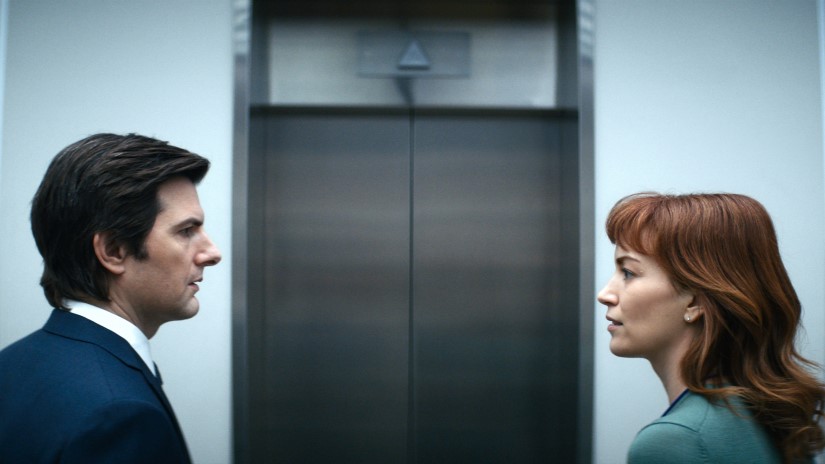
In Ep. 1, Mark enters the elevator at Lumon and transitions into his Innie. This transition sound shows up throughout the series and happens with different characters. What went into the sound of that?
JR: That was a lot of different elements, going from a regular elevator sound into one that I had pitched and manipulated to make it sound more otherworldly.
There was a moment in each transition when you hear an almost static crackle mixed with a very high-pitched beep.
Every time that transition occurs, the timing of what happens visually…is slightly different.
Every time that transition occurs, the timing of what happens visually – this cool bending of the shot – is slightly different. There were some whooshes in there, too.
It’s hard to know what ended up in there because we source these sounds and then we start processing them and manipulating them, turning them into something else until you forget what source it came from.
ES: The moment does sound like what you’d think a rack focus would sound like.
MC: And aren’t there crackles and beeps in the introduction? In the opening music of the show?
JR: Yes, there’s a score component that’s a motif as well. If you were to go frame by frame, which I did for Ep. 9 with the backgrounds as I cut them, you can see in the waveform for this one stem of the score made of this electronic sound that there’s one frame of sound and two frames of drop out, one frame of sound and one frame of drop out, two frames of sound and one frame of dropout, and so on. That becomes what they like to refer to as “the fritz.” Ben was calling it “the fritz” during the mix.
The fritz originally came from composer Theodore Shapiro’s score. Then, when I came on, I figured out how he made that.
The fritz originally came from composer Theodore Shapiro’s score. Then, when I came on, I figured out how he made that. I was looking at using iZotope’s Stutter Edit at first. But really, it came down to just cutting a sound in Pro Tools to that one-two frame pattern. That became something that I could apply to the effects. And as Marko noticed, that shows up in the transitions in the elevator.
It’s in the score for the title music. So as you’re coming out of the title music and into the episode, it’s always there as a motif.
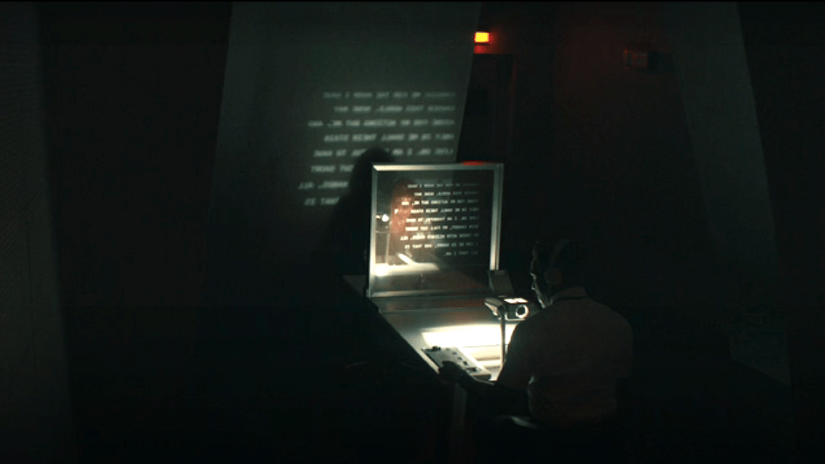
What went into the sound of the Break Room? How were you able to use sound to help the Break Room feel more ominous?
JR: There are some interesting sound design and foley elements happening in there. I loved the sound for the polygraph-type machine. We used it in the close-ups, but then we kept that sound going in the backgrounds even when you don’t see the machine.
ES: I forgot about that sound. You live a lifetime with these moments; it’s a world of micro-moments and you spend so much time there and then move on. I literally forgot about that machine in the interrogation room.
It was this speech from Vladimir Putin that was reversed. It plays very low and everyone was sensitive to make sure that it could barely be heard…
JR: One of the coolest, creepiest sounds in the Break Room scenes came from the picture department. When we came on, it was already sitting in their AAF and we did some things to enhance the way it sounded in the room.
It was this speech from Vladimir Putin that was reversed. It plays very low and everyone was sensitive to make sure that it could barely be heard, so it’s hidden behind the lines of dialogue. It was this shadowy, muffled voice coming from somewhere indirect.
The idea in the Break Room is that it’s a form of torture and coercion; playing some recording at a low level was supposed to drive the person crazy and hopefully get them to recite the passage with appropriate emotion. It’s meant to break the person down. So they’d chosen this recording to fulfill that need.

Looking at the last episode, how did you use sound to help add to the disorientation that Innies feel in their Outie’s lives?
JR: That’s tough to answer because of the way we work; we end up in such a micro type of place.
But I can say that, for example, when they’re in the Outie world and Innie Mark is in the aftermath of that book reading as they’re searching for the missing baby, when the camera lurches, I was doing these low-end and sub-frequency tones that come in waves to match the camera movement. The idea is to have the feeling of waves of anxiety that pass through you; you feel that stomach-turning feeling.
I was doing these low-end and sub-frequency tones that come in waves to match the camera movement.
Everyone was interested in having a sound for that, to contribute to the overall feeling of tension and anxiety the characters are feeling. You can imagine their feeling of hanging without a net. Mark is trying to figure out who his Outie is and suddenly there’s a crisis going on and he’s being asked to help solve that.
With the camera moves and the holes in the wall-to-wall score (the score was in overdrive with sound design elements happening in the music as well), the low-end whooshes and waves contributed their part. We were mixing it all together and deciding how those waves would be a part of the track.
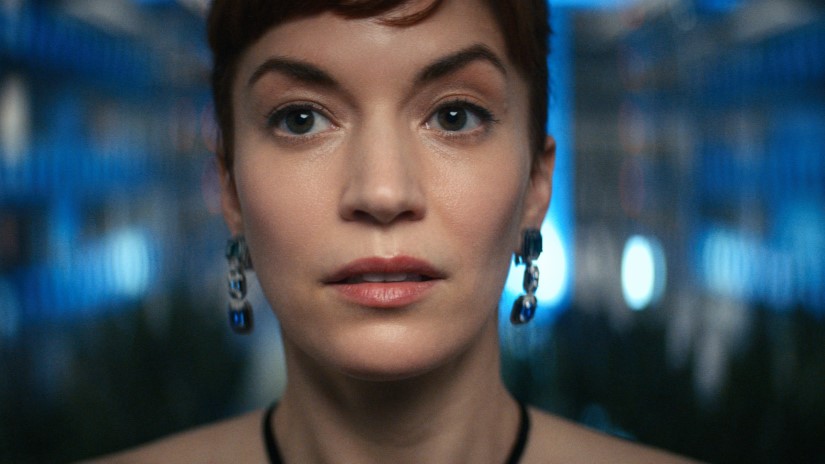
And there’s Helly backstage at the Lumon event before she gives her speech. I loved the disorientating feeling there, with the warped crowd sounds. That gave it a cool, sea-sick feel…
JR: With the crowds, we did some pitch bending and we panned them 360 degrees. As the camera is moving, we moved the crowd to match that so the crowds swirl around Helly and the viewer.
We were also riding the levels of those crowds and having them surge and disappear.
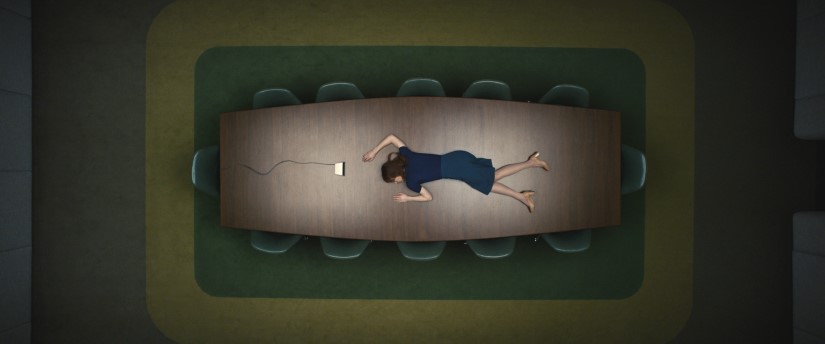
Did you have a favorite scene for foley this season?
GL: When Irving is sitting at his desk, and the black goo is falling down from the ceiling and all over his workstation, that was one of the most interesting scenes for us because we had to create those sounds and make sure that Eric had enough to be able to cut the scene and give that to Jacob to mix it.
…the black goo is falling down from the ceiling and all over his workstation, that was one of the most interesting scenes for us…
Also, the scene in the beginning when Helly is lying down on the conference room table and she’s crawling all over it. You can hear everything that is happening with her. We also had to record all the banging on the door. That was interesting.
JR: The goopy stuff pouring down and hitting the surfaces was awesome. That was my favorite foley moment. You have the sound of the goop gathering on the ceiling, and the fluid sounds of it running down, but the sound of it hitting the keyboard and desk was perfect. That was awesome. It’s the icing on the cake that sells that scene. It’s happening in Irving’s head and I was adding some swirling sounds there, but when it starts landing, that’s where it transitions into reality in a sense. Of course, you find out that it’s still not reality but the foley sound made it feel more real when it hits the desk and surfaces.
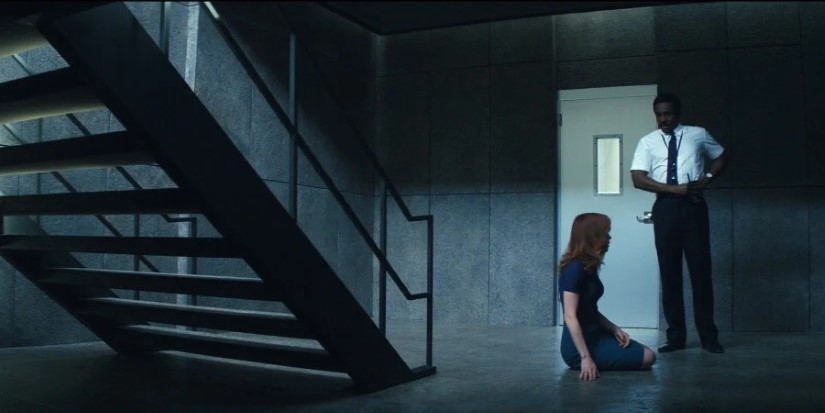
Jacob, did you have a favorite scene for sound editing/mixing?
JR: That’s always a tough question, but I loved the elevator transitions. I loved in Ep. 1 when Helly was trying to leave Lumon and she’s going out and coming back in through the door; I loved how we played with the dryness and wetness in that scene.
Then, when we get to Ep. 2, that whole scene plays over again but from the point of view of the stairwell instead of the corridors inside Lumon. That was a great opportunity to reinforce the idea that the Innie world is dry and the Outie world is wet. In that corridor, it’s actually the Outie world and Innie world right next to each other and Helly is going back and forth. So, Ep. 1 is the Innie point of view, and Ep. 2 is the Outie point of view. That was something we all took time in the mix to nail.
That was a great opportunity to reinforce the idea that the Innie world is dry and the Outie world is wet.
Another favorite design element – and this plays out through the series – are the tones in the corridors in Lumon. They evolved from the first episode to the last.
When we started working on the show, I did all these design ideas for how Lumon was going to sound. I also got ideas from Ben and Jeff Richmond (supervising picture editor). I had this thought that Lumon was like this host, this sentient organism that all the Innies were feeding off of while they were in there, almost umbilically. So I thought, “Wouldn’t it be cool if the room tones were made from human breaths?” I could make a room tone out of breathing by taking a breath and stretching it out.
…just to have these little textures of other room tones to weave in and out of helps it to not sound static…
So I recorded some breaths and used some other recordings that I had and made these room tones that kind of swirled at times. I played that for Ben and Jeff, and they said, “This stuff is cool but it’s too much. Let’s save it for the later episodes. Let’s start out with fairly-normal room tone with some fluorescent light hums and computer hums.”
Then, as the episodes progressed and got stranger, we started to throw in some of the breathier, swirlier room tone elements.
It was good to have that as a palette because you keep coming back to these corridors and some of the scenes are long, but we found ways to keep it interesting. For instance, if it’s a tracking shot, and the group goes around the corner or passes a door, just to have these little textures of other room tones to weave in and out of helps it to not sound static, and it’s really tailored to whatever is happening in the scenes, in terms of their motion through the corridors or their dialogue. Those tones were a favorite sound of mine.
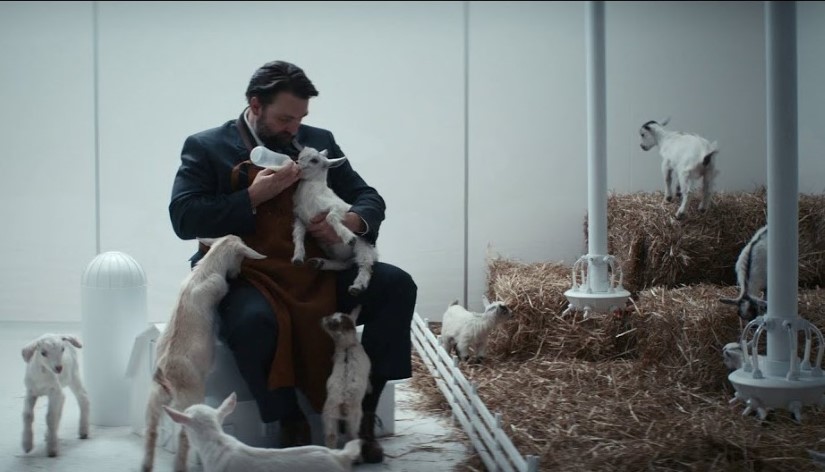
You mentioned that inside Lumon it sounds dry, but I think the wettest sound inside Lumon was the baby goat bleat that reverberates down the hall…
JR: That’s true! And you can thank the baby goats themselves for that sound because all the actual bleating was production sound. It was amazing. The goats gave an amazing performance. They should be nominated for supporting ensemble. The sound of the baby goats was not what you’d normally think of as goat sounds. There was almost a human quality to them. And that was all real. We didn’t have to manipulate those sounds.
…all the actual bleating was production sound. It was amazing. The goats gave an amazing performance.
George and Marko also added some footsteps for when we don’t see the goats, but we hear them. There is that one goat that has wandered out into the corridor, and so the foley team created goat feet for that.
MC: It was funny because the goat feet were more trouble than horse feet because they’re small. For horses, we use coconuts and they are great for making that cuppy sound. But for the baby goat hooves, I think we tried real hooves but it didn’t play. So I tried using dixie cups, and it worked out great.
GL: There was another cue where we tried to make the sound using 16mm film cores.
MC: It was tough because we were on a floor that didn’t make noise.
GL: For the goat feet, we had to go back and forth a couple of times to get the right sound for that. The sound of the feet had to be distant. And we had to do different variations of the feet.
Getting the right sound for the goat feet was also one of those instances where we did some tests…
ES: Getting the right sound for the goat feet was also one of those instances where we did some tests; we did a bunch of stuff and sent it to Jacob. There was some back and forth. But you can’t do that for every sound. There just isn’t time. You have to pick and choose what sounds to do that with – pick the sounds you want to nail in a certain way. And we did that for the goat feet.
JR: When I got the material, I had to decide which option was the “goatiest” sounding. Which were the most animal-like? What sounds the least human? What instantly conjures up the image of a goat in your mind?
I passed some options to the picture department early on because they asked for the goat feet right away. They cut the feet in and lived with those goat feet for months in the offline edit until we came in and did them in foley. So, yeah, those goat feet had a history.
MC: We take our instructions in the foley room very seriously. So, George and I went back and forth, and we had our opinions on it, but we need to stay within the confines of what the directions are. That’s the most difficult part of our job, trying to hit that fine line.
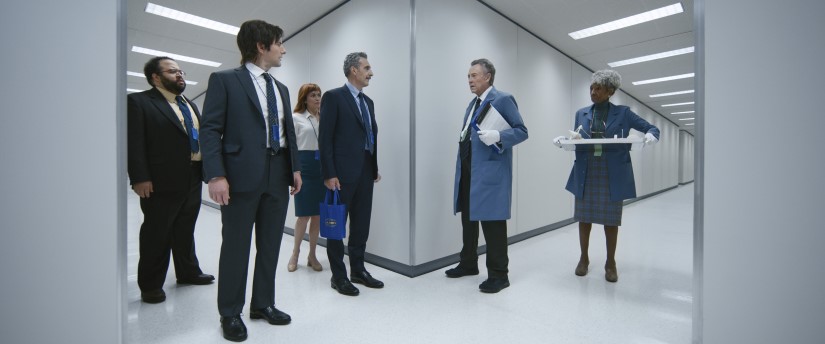
Overall, what are you most proud of in terms of your work on Severance?
ES: Severance is beautifully crafted science fiction. The world it shows us mirrors much of the imagery and emotion that we might experience in our own lives but it grafts the insidiousness of our very real fear of technological dehumanization to the imagined technology of the severance process – a process that may not be that far off when you look at real world technologies like Neuralink and the ever advancing sophistication of AI.
From day one, we knew ‘Severance’ was going to keep us on our toes…
It’s fun to hear people talk about Severance and watch the debates spiral out from the events of the show and speculations about where it’s going to what’s happening in the real world along similar talking-points like technology, politics, and morality. It’s very rewarding to watch people get excited by it, to watch their eyes and minds light up when they embrace the fiction and consider the possibilities. I’d say I’m most proud of being part of what makes that experience possible.
GL: From day one, we knew Severance was going to keep us on our toes and we are proud to be part of the illustrious team behind the sound design of this AMAZING show.
JR: As supervising sound editor, I’m proud to have put together such a creative and collaborative team. There was a high level of communication not only amongst ourselves but with the director and picture editor as well.
A big thanks to Jacob Ribicoff, Marko Costanzo, George A. Lara, and Eric Strausser for giving us a behind-the-scenes look at the sound of Severance and to Jennifer Walden for the interview!

